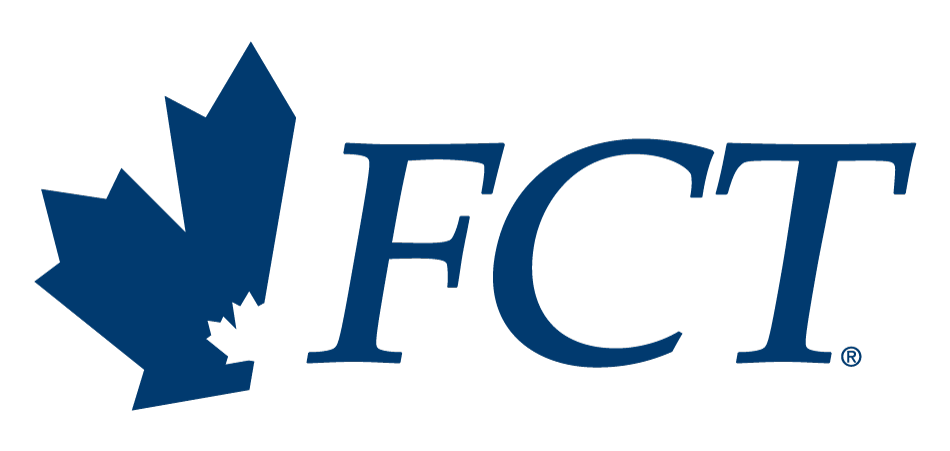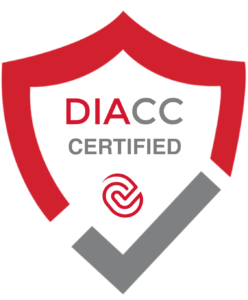A Letter from the President, DIACC
The choices we make about digital trust and identity verification architecture today will shape Canadian privacy, security, and digital rights for generations to come. Recent developments in the United Kingdom offer a timely reminder: how we build digital trust and identity systems matters as much as whether we build them.
Canadians demand a path that’s grounded in the principles of federation, decentralization, privacy by design, and user control. As pressure mounts globally for mandatory and centralized digital identity systems, we must advocate for principles that ensure our implementations live up to the designs that Canadian’s demand.
The UK’s Announced Approach
The UK faces genuine challenges that digital trust and identity could address. Document fraud in right-to-work verification creates significant problems. Administrative burden on employers is substantial. And approximately 10% of UK residents have never held a passport, creating barriers to proving identity for routine transactions. A digital credential accessible via a smartphone, which 93% of UK adults possess, could help address these legitimate issues.
The critical question isn’t whether digital trust and identity can solve real problems. It’s how it’s implemented.
The UK government has committed to making its proposed BritCard system mandatory and references “a central database of people entitled to live and work in the UK.” Cybersecurity experts have been explicit in their warnings: centralized databases create “enormous hacking targets,” particularly when complex dependency chains involving contractors and integrators are involved. Within days of the announcement, 1.6 million people had signed petitions opposing the scheme, expressing concerns about surveillance and the notion of “Big Brother in your pocket.”
These concerns aren’t theoretical. Centralized identity databases have been compromised in multiple jurisdictions, impacting millions of individuals. Once compromised, the consequences include identity theft, widespread fraud, and erosion of public trust that takes years to rebuild. The attack surface, which arises from aggregating millions of records in centralized systems, is of enormous importance.
Architecture as Values Made Concrete
There is an alternative architectural strategy that is privacy-preserving and uses decentralized credentials. This approach uses:
- Cryptographically-signed credentials that are held on user devices, not in centralized databases
- Verification happens through cryptographic proofs rather than database lookups
- Selective disclosure enables proving what’s necessary (like eligibility to work) without revealing your complete identity profile
- Users control when and how their credentials are shared
This isn’t experimental technology. Estonia has operated such a system successfully for over two decades. The EU Digital Identity Wallet regulation explicitly requires selective disclosure and offline verification capability. Singapore’s Singpass uses QR-code-based verification to minimize tracking. These approaches have been proven at the national scale.
The lesson for Canada isn’t “don’t build digital trust and identity verification.” It’s “architecture must reflect values.“
A mandatory system built on centralized databases carries fundamentally different privacy risks, security vulnerabilities, and civil liberties implications than a voluntary system using privacy-preserving credentials held by users. The efficiency gains and fraud reduction can be achieved through either approach; however, one strategy respects privacy by design rather than by promise.
Canada’s Distinctly Different Approach
Canada has already charted a different course. Aligning with our governance models and values, our approach is decentralized. There is no single national digital identity system, no central government database of all Canadians, and no mandatory credential that citizens are required to obtain. Learn more about our vision for Canada’s decentralized approach.
Instead, our vision of a digital trust and identity verification ecosystem aligns with the Pan-Canadian Trust Framework (PCTF), developed by DIACC in collaboration with federal, provincial, and territorial governments, financial institutions, telecommunications providers, privacy advocates, and civil society organizations. The PCTF enables digital trust and identity services through:
- Federated Architecture: Multiple credential issuers (provinces, federal government, private sector organizations) can issue credentials that are mutually recognized through conformance to a common framework of components without creating centralized databases or requiring technological uniformity.
- Privacy by Design: The PCTF embeds privacy protections at the architectural level. Requirements include data minimization, purpose limitation, selective disclosure capabilities, transparent consent management, and security safeguards proportionate to the sensitivity of the information. These aren’t policy aspirations; they’re assessed through independent certification.
- User Control: Individuals maintain control over their credentials and decide when and with whom to share information. Credentials can be stored on personal devices, and users can revoke consent and withdraw their credentials through clear procedures for data deletion.
- Voluntary Adoption: Digital credentials supplement rather than replace existing identity documents. Canadians choose whether to use digital identity based on convenience, security, and trust. It’s not a government mandate.
- Verifiable Privacy Protections: Through DIACC’s PCTF Certification Program, organizations can obtain independent verification that their digital trust and identity verification services implement privacy-preserving architectures. This shifts privacy from a policy promise to a verified reality.
This approach reflects what Canadians want. Our research consistently indicates that privacy, security, and choice are key factors driving Canadians’ desire for digital trust and identity. The bottom line is that voluntary, privacy-focused solutions earn public trust, while mandatory systems face resistance.
The Technologies That Enable Privacy
Privacy-preserving digital trust and identity isn’t just philosophically preferable; it’s technically achievable through verifiable credentials and related technologies that the PCTF supports:
- Selective Disclosure: Instead of presenting your entire driver’s licence to prove you’re old enough to purchase age-restricted products, you can present a cryptographic proof that you’re over 19, without revealing your birth date, address, or even your name. The verifier gets the answer they need; you retain privacy over information they don’t.
- Decentralized Verification: Credentials can be verified through cryptographic signatures without requiring queries to centralized databases. This means verification can happen offline, in real-time, without creating transaction records that enable tracking or surveillance.
- Zero-Knowledge Proofs: Advanced cryptographic techniques enable proving statements about your identity (such as “I am a resident of Ontario” or “I hold a valid professional license”) without revealing the underlying credential or creating linkable identifiers across different interactions.
- User-Held Credentials: When credentials live on your device rather than in government or corporate databases, you control when they’re shared. A data breach at one organization doesn’t compromise your credentials held elsewhere.
These technologies are standardized and operating at scale internationally. Canada’s PCTF is designed to accommodate them as they become more widely deployed, ensuring that our framework supports the most privacy-preserving approaches available.
What This Means for Canada’s Digital Future
The path forward requires intentionality about the choices we make now, in procurement specifications, in system design, in policy development, and in public dialogue:
- For Government Leaders: The PCTF bridges regulations with operational realities to provide a foundation for cross-sector interoperability. Resist pressure for centralized databases or mandatory systems. Ensure procurement specifications prioritize privacy-preserving architectures and require independent DIACC’s PCTF certification. Build the physical-digital bridges (assisted digital services, multi-modal access) that ensure universal accessibility.
- For Industry Stakeholders: Pursue PCTF certification for digital trust and identity solutions and design products that implement selective disclosure and user control, rather than relying on maximalist data collection. Accept certified credentials from diverse issuers to create convenience that drives voluntary adoption. Contribute expertise to framework evolution.
- For Privacy Advocates and Civil Society: Hold organizations accountable for their privacy promises by demanding PCTF certification. Participate in framework governance to ensure that citizen perspectives inform the technical architecture. Help build public understanding of how privacy-preserving systems work and why architecture matters.
- For Technology Providers: Align product development with PCTF specifications and privacy-preserving technologies. Seek DIACC PCTF certification for competitive differentiation. Invest in open standards that prevent lock-in and enable interoperability. Innovate on capabilities including: verifiable credentials, selective disclosure, and zero-knowledge proofs.
- For Citizens: Engage with digital trust and identity programs as they launch. Demand transparency about whether systems use centralized databases or decentralized credentials. Provide feedback on usability, accessibility, and privacy concerns. Exercise control over personal information through consent management: support organizations that pursue voluntary, privacy-preserving approaches over mandatory, surveillance-enabling architectures.
Building Services Worthy of Trust
Canada can build a digital trust and identity verification infrastructure of services that are:
- More secure because it’s decentralized — no honeypot databases to target
- Widely adopted because it’s genuinely helpful and voluntary — convenience without coercion
- Privacy-protecting through architecture, not only policy promises — verified through independent testing
- Interoperable while respecting jurisdictional sovereignty — federation without centralization
- Inclusive by design rather than by afterthought — multi-modal access serving all Canadians
Our success demands that we prioritize privacy-preserving architectures in procurement specifications, insist on open standards and independent verification, invest in accessibility for all Canadians regardless of their digital literacy or access to technology, and establish strong trust frameworks and mutual recognition mechanisms that enable effective federation.
The path forward isn’t about government versus private sector, federal versus provincial, or mandatory versus voluntary in the abstract. It’s about all of us, across jurisdictions and sectors, committing to build and use digital trust infrastructure services that are distinctly Canadian: digital trust infrastructure that reflects our federal structure, our values, and our constitutional commitments to privacy and individual rights.
The UK’s experience with BritCard is a reminder that design choices matter. Centralized, mandatory systems may promise efficiency, but they carry profound risks to privacy, security, and civil liberties. Canadians have chosen differently, and we must ensure our implementations honour their choice.
We can develop digital trust and identity verification services that earn the confidence of Canadians. The architecture exists. The technologies are operational. The framework is ready. What remains is a collective commitment to getting the implementation right.
The choices are ours to make. The time to make them thoughtfully is now.
Joni Brennan
President, DIACC
Further Reading:
DIACC is Where Digital Trust Means Business
Contact us to be a part of the change you want to see, stay informed about developments in digital trust and identity verification, and learn how you can contribute to discussion drafts or become a member.


